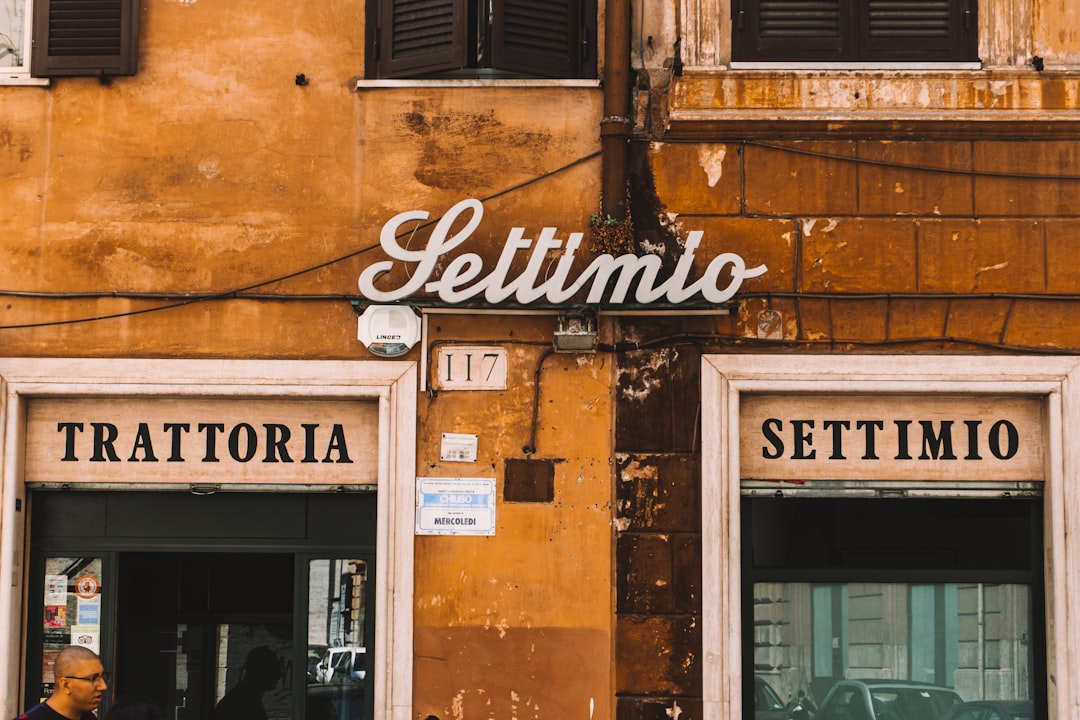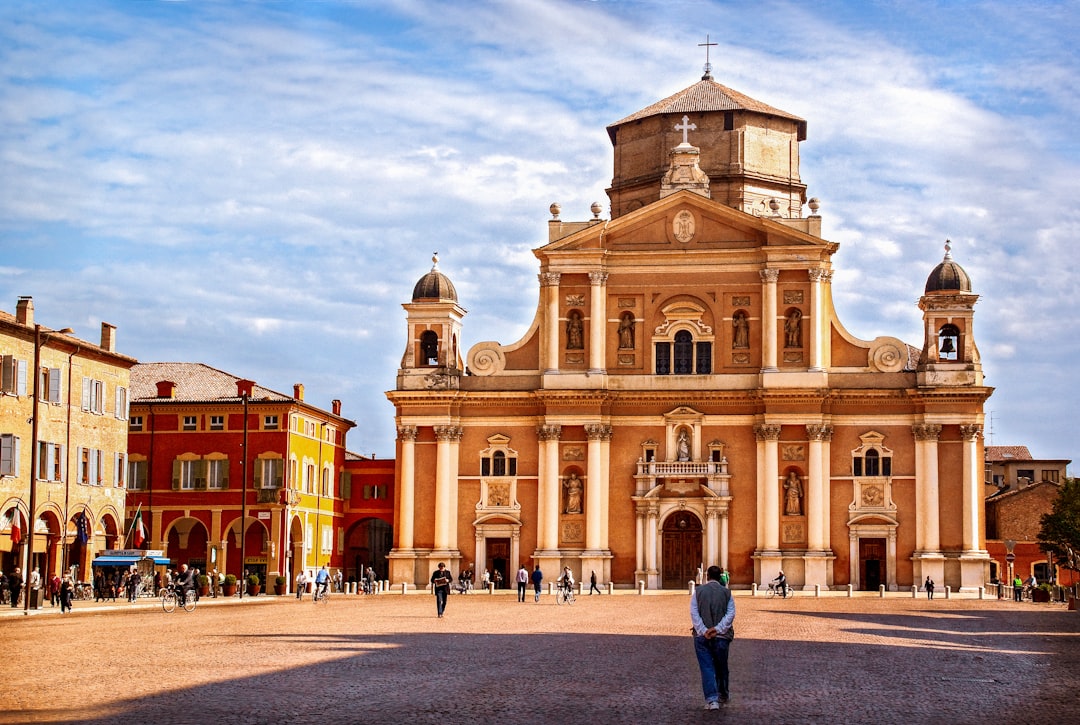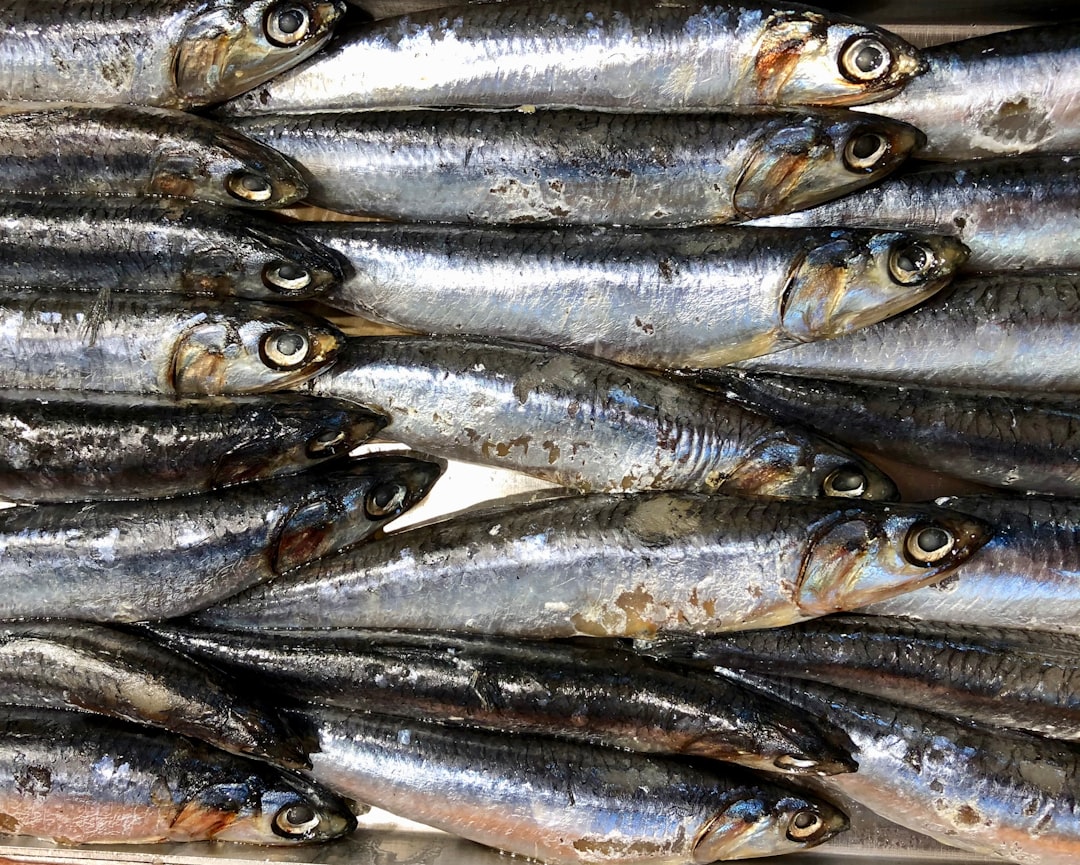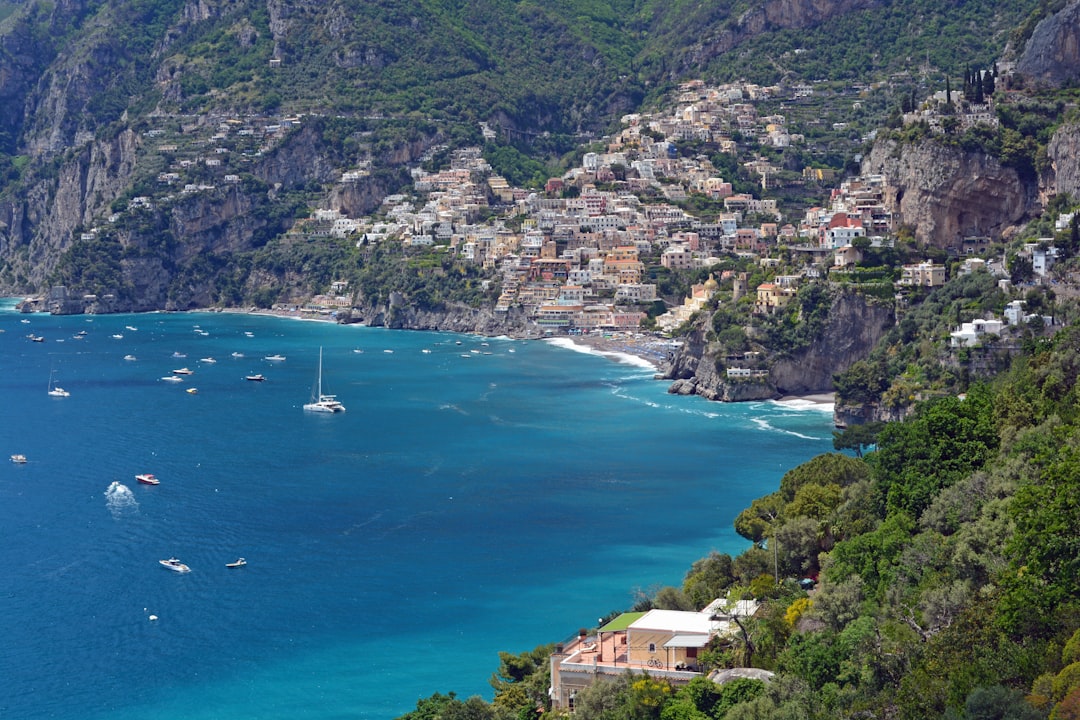Bella Italia: Exploring the Flavors Stanley Tucci Discovered in Season 2 of ‘Searching for Italy’
Bella Italia: Exploring the Flavors Stanley Tucci Discovered in Season 2 of 'Searching for Italy' - The Allure of Italy's Regional Specialties
Italy is a country that takes immense pride in its regional culinary traditions. The peninsula is home to 20 diverse regions, each with its own unique history, culture, and of course, cuisine. This strong regional identity makes dining in Italy an adventure unto itself. As Stanley Tucci discovered in Season 2 of 'Searching for Italy,' the country's regional specialties are what give Italian food its soul.
One big part of the allure is that each area has signature ingredients and dishes you can't easily find elsewhere. Campania is renowned for its buffalo mozzarella, Naples-style pizza, and lemon-scented pastries. Emilia-Romagna claims balsamic vinegar and Parmesan cheese as two of its icons. Puglia produces more olive oil than anywhere else in Italy. Basilicata gifts the world with spicy, peasant-style salami and peppers.
Equally important are the local cooking methods and styles. The seafood restaurants of Sicily showcase the island's Arabic and North African influences. Roman food is grounded in the cucina povera, or "food of the poor," thanks to its use of offal and other inexpensive ingredients. Up north in Alto Adige, expect hearty, Austrian-tinged specialties that reflect the Alpine climate.
Beyond geography, history also shapes each region's cuisine. Venice demonstrates the exotic spices Venetian traders once brought back from abroad. Umbria and Tuscany retain the simple, back-to-basics cooking of the Franciscan monks. And the Alpine Valle d'Aosta clings to age-old Savoyard dishes from its past as part of the French kingdom.
Of course, food traditions evolve over time as well. Molise has seen its once poverty-driven cuisine gain respect, with chefs elevating rustic recipes through modern technique. Calabria mixes new ingredients like potatoes and tomatoes into its ancient Greek and Spanish-influenced fare. Even Rome has lightened up its rich, heavy classics to better suit contemporary tastes.
What else is in this post?
- Bella Italia: Exploring the Flavors Stanley Tucci Discovered in Season 2 of 'Searching for Italy' - The Allure of Italy's Regional Specialties
- Bella Italia: Exploring the Flavors Stanley Tucci Discovered in Season 2 of 'Searching for Italy' - Pizza Perfection from Naples to Rome
- Bella Italia: Exploring the Flavors Stanley Tucci Discovered in Season 2 of 'Searching for Italy' - Pasta Pride Across Italy's Provinces
- Bella Italia: Exploring the Flavors Stanley Tucci Discovered in Season 2 of 'Searching for Italy' - Tuscan Trattorias and Their Treasured Traditions
- Bella Italia: Exploring the Flavors Stanley Tucci Discovered in Season 2 of 'Searching for Italy' - Reveling in the Riches of Emilia-Romagna
- Bella Italia: Exploring the Flavors Stanley Tucci Discovered in Season 2 of 'Searching for Italy' - Savoring Sicily's Sweet and Savory Sensations
- Bella Italia: Exploring the Flavors Stanley Tucci Discovered in Season 2 of 'Searching for Italy' - The Mediterranean Magnificence of Sardinia's Fare
- Bella Italia: Exploring the Flavors Stanley Tucci Discovered in Season 2 of 'Searching for Italy' - Lasagna, Limoncello and More of Campania's Culinary Gems
Bella Italia: Exploring the Flavors Stanley Tucci Discovered in Season 2 of 'Searching for Italy' - Pizza Perfection from Naples to Rome

Pizza holds a special place in Italian cuisine, with Naples and Rome standing as the country's great pizza capitals. While we often treat pizza as fast food these days, Italians view it with pride and passion. Pizza making is an art form perfected over centuries.
Naples stakes its claim as the birthplace of modern pizza. Back in the 1800s, this bustling port city developed pizza into the dish we know today - with tomato sauce, mozzarella cheese, and a charred, chewy crust. Street vendors sold these early pizzas from carts to locals and sailors. Now, Neapolitan-style pizza has earned protection from the Italian government with its own Denominazione di Origine Controllata (DOC) designation.
When done right, pizza from Naples boasts a soft and chewy crust that puffs up into a raised cornicione rim. It gets spotted with bubbles and black bits from the searing hot, wood-fired oven. The toppings adhere lightly so they don't slide right off. Just a sprinkling of tomatoes, olive oil, and basil grace the Margherita pizza, allowing the fresh mozzarella's sweetness to sing.
Meanwhile in Rome, pizza takes on a thinner, crunchier profile. Roman-style pizza al taglio, meaning "by the slice," often incorporates more elaborate toppings. But it still focuses on high quality ingredients like prosciutto, artichokes, or mushrooms. The signature pizza bianca ditches tomato sauce altogether for a piece of focaccia garnished with olive oil, rosemary, and sea salt.
Both varieties have their passionate defenders. As Stanley Tucci discovered in Rome, even movie legends Sophia Loren and Carlo Ponti sparred over whether Neapolitan or Roman pizza ruled supreme. While the two cities use different techniques, their pizzas remain united by the same quest for excellence.
Eating pizza in Naples and Rome means joining a century-old tradition. Families have passed down recipes over generations. Pizzaiolos train for years under masters. And pizzerias source from local mills that specially grind durum wheat. Italians have elevated pizza into an experience to savor, not just a fast bite.
Beyond heritage, context also matters. For many, pizza tastes best grabbed on the go from a bustling shop. The char, the chewiness, and the basil perfuming the air as you stroll - it's pizza at its most irresistible. Others argue pizza should be enjoyed seated at a white-clothed restaurant table, paired with an Aperol spritz or crisp falanghina wine. There's joy found in slowing down for a meal versus eating on the run.
Bella Italia: Exploring the Flavors Stanley Tucci Discovered in Season 2 of 'Searching for Italy' - Pasta Pride Across Italy's Provinces

Each of Italy's provinces brings its own spin to the nation's beloved pasta. Just as the French take pride in their wines and cheeses, Italians revel in the diversity of noodles across their land. Pasta enjoys a rich history here, dating back to ancient Rome. Today it remains an essential part of Italian gastronomic identity.
In Naples, tubular paccheri and ruote take on ragù alla Genovese, a meaty tomato sauce slow-cooked for hours. Up north in Valle d’Aosta, locals turn to crespelle, thin crepes layered with ham and fontina cheese. Sicily boasts ankokra sarde, an Arab-influenced pasta with sardines, fennel, and saffron.
The type of pasta often matches the region’s terrain and climate. Residents of mountainous Trentino rely on hearty barley-based shapes like spätzle. In rainy Veneto, wide strips of bigoli hold stormy sauces nicely. Off the Adriatic coast, seafood-filled brodetti pair perfectly with stringy, slippery spaghetti alle vongole.
Equally important are the drying and extrusion methods. Some pastas get molded only by hand for generations, like orecchiette in Puglia. Others pass through perforated dies to form whimsical shapes, such as radiators in Emilia-Romagna. Bronze die extrusion, roughening up the pasta surface, remains popular for grabbing rich ragu in Bologna.
Of course, tomatoes star prominently across Italy’s pasta scene today. But they only arrived after Columbus’s voyage to the Americas. Prior to the 1500s, pasta sauces relied more on olive oil, garlic, herbs, cheeses, and nuts. Tomatoes changed everything, adding both acidity and sweetness to balance those other ingredients.
Some regions do continue pre-tomato traditions. Liguria stays true to its ancient maritime roots with trenette al pesto, tossing long noodles in basil, pine nuts, garlic, and olive oil. Sardinia’s malloreddus alla Campidanese relies solely on saffron for its sunshine yellow hue.
Preparation techniques also differ across provinces. Romans insist pasta be cooked al dente. Venetians adore creamy risottos as an alternative to noodles. Flat breadlike lasagne and cannelloni hail from Emilia-Romagna. Rustic hand-rolled pici comes only from Tuscany.
Of course, restaurants provide an easy way to taste these regional differences across Italy. But learning to recreate specialities at home lets you fully immerse yourself in local pasta pride. This means tracking down the right dried pasta shapes, tomatoes, olive oils, and cheeses from each area. While supermarkets carry some specialty items, gourmet stores and online sites offer a wider, more authentic selection.
Bella Italia: Exploring the Flavors Stanley Tucci Discovered in Season 2 of 'Searching for Italy' - Tuscan Trattorias and Their Treasured Traditions

Tuscan trattorias exude the warmth and comfort that food should provide. These casual eateries serve up the hearty, rustic dishes that Tuscany does best. Their menus rely on local ingredients like beans, vegetables, cheeses, cured meats, breads, and olive oil. You won’t find trendy molecular gastronomy here; instead, the focus stays on time-honored recipes made with care.
Florence’s Trattoria Mario has upheld this tradition for over 50 years. Customers cram elbow-to-elbow at shared tables as energetic waiters deliver plates of ribollita, pappa al pomodoro, and bistecca alla Fiorentina. Mario’s bustling scene spills outdoors during summer months, when locals and tourists alike flock to this neighborhood gem. Just steps away, family-run Trattoria Sabatino treats diners like their own nonna would. For those venturing further into Tuscany’s countryside, Osteria del Mare serves sea-to-table fare in coastal Monte Argentario, while La Tana dei Brilli brings hearty porchetta sandwiches to Panzano in Chianti.
Equally important are Florence’s tripe restaurants, called lampredotto. These humble spots keep tripe stew on the menu at all hours. At holes-in-the-wall like Lampredotto All’Ortone and Il Trippaio, customers grab steaming bowls topped with parsley and pepper at the counter. Stands even dot the city streets for lampredotto on-the-go. While odd-sounding to outsiders, Florentines have savored this peasant dish for centuries. Much of Tuscan cuisine stemmed from making use of the entire animal, wasting nothing.
Beyond Florence, trattorias in Siena peddle pasta like pici, the hand-rolled, spaghetti-like noodles unique to Tuscany. Their pici cacio e pepegrinds black pepper over the thick strands for a fiery kick. Moving toward the coastline, Elba Island eateries highlight fresh seafood like aragosta alla griglia (grilled lobster). In quaint San Gimignano, seasonal white truffles grace plates come fall.
Wherever you roam in Tuscany, trattorias source largely from their surrounding terroir. Menus shift with the olive harvests, mushroom foraging seasons, and availability of vegetables like zucchini blossoms. Farmers and fishermen often personally deliver to their local trattorias. Wine lists highlight small family wineries using indigenous grapes like sangiovese. And when available, the regional Chianina cow graces many menus as bistecca.
Unlike fancier ristorantes, these homey trattorias often don’t require reservations. The décor skews simple, with checkerboard tablecloths and Sangiovese-hued walls. But don’t mistake their casual ambiance for a lack of cucina povera standards. In fact, trattorias take pride in executing even simple dishes perfectly with local ingredients. Beyond the food, they provide glimpses into Italian culture often missed at tourist traps. Regulars chat away with waitstaff who’ve served them for decades. Children frolic around tables as their parents sip vino. And lively Italian punctuates the air from table to table.
Bella Italia: Exploring the Flavors Stanley Tucci Discovered in Season 2 of 'Searching for Italy' - Reveling in the Riches of Emilia-Romagna

As Stanley Tucci discovered, Emilia-Romagna brims with iconic foods that define Italian cuisine worldwide. This northern region gifted the world with balsamic vinegar, Parmigiano-Reggiano cheese, and the heavenly marriage of pasta and meat sauce we call ragù alla bolognese.
Emilia-Romagna’s capital, Bologna, remains a gastronomic heavyweight. Its bustling markets overflow with local produce like squash blossoms and grapes. Delis proudly display mortadella, cured hams, and stuffed pastas. And Bologna’s osterias serve trolley-loads of tortellini in brodo, lasagna Bolognese, and other rich fare. This is a city that celebrates food.
Beyond Bologna, the ingredients of Emilia-Romagna benefit from the area's fertile Po Valley locale. Parmesan cheese carries the real Denominazione di Origine Protetta (DOP) label, meaning it came from Parma, Reggio Emilia, or other designated provinces. Traditional balsamic vinegar matures for 12+ years in the attics of Modena and Reggio Emilia. Romagna's rustic piadina flatbread makes the perfect vehicle for affettati misti and squacquerone cheese.
Equally important are the area’s fresh pastas. Lasagna noodles, tortellini, and tagliatelle all hail from here. Watching sfogline hand-stretch pasta offers glimpses into a slowly vanishing art. Emilia’s filled pastas encapsulate the Italian knack for blending savory and sweet. Tortellini encases rich Mortadella bologna, Parmigiano-Reggio cheese, and nutmeg in tender dough.
The restaurants of Emilia-Romagna also adhere to culinary tradition. Bologna’s Drogheria della Rosa sources from local purveyors to transform classics. Regional seafood stars at Marè in Rimini, including grilled cuttlefish with purple cabbage and wild herb salad. Osteria Francescana still excels after founder Massimo Bottura earned the title of World’s Best Restaurant.
For many visitors, joining a Bologna food tour proves the perfect orientation to Emilia-Romagna’s riches. Guides disperse the crowds at landmarks, taking travelers to mom-and-pop salumerie and markets. Guests sample mortadella sliced right off the leg, learn why some Parmigiano-Reggiano ages three years versus two, and slurp handmade pasta glowing rich yellow from farm-fresh egg yolks. Between tastes, guides recount great family sagas behind the brands. Food becomes storytelling.
Outside Bologna, travelers should time their visit for festivals celebrating local specialties. September's MortadellaBò party draws droves to the photogenic porticoed streets surrounding Piazza Maggiore. Parma's September cheese and pork festival honors the city's two greatest contributions—Parmigiano-Reggiano and Prosciutto di Parma.
Small group food tours with private transport weave together the best of Emilia-Romagna. Participants grant themselves insider access to producers of balsamic vinegar, Parmigiano-Reggiano, prosciutto, and wine. Meeting the families behind the brands not only offers personalized tastings, but forges connections that make those bottles on the grocery store shelf later truly resonate.
Bella Italia: Exploring the Flavors Stanley Tucci Discovered in Season 2 of 'Searching for Italy' - Savoring Sicily's Sweet and Savory Sensations
Sicily gifts food lovers with a bounty of sweet and savory sensations unique to the island. Its multifaceted cultural history shaped a cuisine quite distinct from mainland Italy. Greek, Spanish, and North African influences come through in Sicily's syrupy desserts, elaborate pastries, and spice-infused street snacks. Exploring these tastes offers delicious insight into Sicily’s crossroads location.
Start bynibbling your way through Palermo's street food markets. Paninerie like Antica Focacceria S. Francesco sling spleen sandwiches oozing with tangy caciocavallo cheese. Friggitorie deep fry archetypal Sicilian street eats like panelle chickpea fritters, arancine rice croquettes filled with meat or cheese, and crisp sesame-coated bignè. carts piled high with just-fried goodies draw long lines as locals indulge in classics.
The island’s unique spin on Italian pastries dazzles as well. Cannoli find their origin in Sicily. Their crunchy fried shells get filled with sweetened ricotta cheese scented with orange blossom or chocolate. Palermo’s Pasticceria Cappello creates artful cannoli swirled with pistachio and sculpted into flowers. Cassata cake layers airy pan di Spagna sponge with ricotta, chocolate, and candied fruit. And the Arab-influenced sciampagna marries marzipan with honey and rosewater.
Beyond the sweets, Sicily’s appetizers and first courses showcase the local bounty of seafood, eggplant, and more. Take arancini’s upscale cousin, arancina di riso al nero di seppia - sticky black rice tinted by cuttlefish ink and stuffed with tender octopus. Trapani-style pesto ditches basil for almonds and cherry tomatoes to coat busiate spirals. Grilled eggplant caponata piles sweet caramelized veggies atop bruschetta. In all dishes, balance reigns between the sweet and the salty.
Main courses also highlight Sicily’s cultural fusion. Cous cous con pesce draws North African inspiration, scattering fish and seafood over buttery rounds of wheat. Sarde a beccafico stuffs fresh sardines with pine nuts and raisins like the island's mythical beccafico bird. Falsomagro brings Spanish technique to the table, breadcrumbing and pan-frying slices of Cassata filling into "mock veal" medallions.
Finally, Sicily’s dessert repertoire can’t be missed. Beyond cannoli, cassata cake, and other classics, keep an eye out for regional specialties. Gelato shops churn pistachio, jasmine, wild strawberry, and other tempting Mediterranean flavors. Biancomangiare blends almond milk with rose or orange water into an elegant pudding. Frutta di Martorana, modeled after fruits and vegetables, has graced tables since medieval times. And granita cools palates with icy shaved desserts such as mulberry, lemon, and almond.
Bella Italia: Exploring the Flavors Stanley Tucci Discovered in Season 2 of 'Searching for Italy' - The Mediterranean Magnificence of Sardinia's Fare

With its stunning emerald coastline and interior dotted with prehistoric stone ruins, Sardinia captivates visitors long before they ever reach the table. But make no mistake - this island’s cuisine can stand up to its spectacular scenery. Sardinia gifts food lovers with a taste of the Mediterranean at its finest.
See, Sardinia’s location off Italy’s western coast means its culinary traditions took a different path. You won’t find tomatoes, oregano, or garlic dominating here. Instead, Sardinia’s fare celebrates the island's indigenous herbs, artisanal cheeses, fresh seafood, and ancient grains. The flavors speak to seaside living, pastoral hillsides, and a people fiercely preserving their heritage.
Meat lovers rejoice in Sardinia’s porceddu - slow-roasted suckling pig that remains tender and juicy throughout its long cooking time over fragrant myrtle wood. Locals celebrate porceddu at festivals and feast days where these little pigs roast for hours on rotating spits. Beyond porceddu, pecorino Sardo sheep’s milk cheese brings its distinctive funk and saltiness to pasta dishes. Bottarga (cured mullet roe) gets shaved over spaghetti or served with crisp flatbread called carta da musica.
Seafood also stars, with sweet crudos of glistening clams and plump mussels served with Sardinia's tangy lemons. Culurgiones pasta pockets stuffed with fresh mint and sheep's milk ricotta mimic silver-scaled fish. Malloreddus shell-shaped pasta often gets sauced with hearty bottarga or saffron.
The island’s hyper-local ingredients stem from various isolated microclimates and diverse landscapes. Crops thrive in the fertile Campidano plain around Cagliari. Shepherds in Barbagia and Ogliastra produce prized cheeses and lamb. Gallura provides perfect conditions for vineyards and olive groves. This means Sardinians eat according to what grows nearby.
Travelers get the real deal at no-frills trattorias in places like Alghero, Oristano, Nuoro, and Cagliari. Look for crumbed fried artichokes, mashed fava beans, and pecorino ravioli swimming in meat ragu. Seafood-centric spots in Bosa, Castelsardo, and Sant’Antioco capture fresh catch like red mullet and spiny lobster. Just be sure to start meals off right with myrtle liqueurs like golden amber Filu Ferru or rose-hued Mirto Rosso.
Bella Italia: Exploring the Flavors Stanley Tucci Discovered in Season 2 of 'Searching for Italy' - Lasagna, Limoncello and More of Campania's Culinary Gems

Campania gifts hungry travelers with a sensory feast of sights, sounds, and of course, tastes. This southern Italian region claims one of Europe’s most bustling capital cities in Naples, with its laundry-lined alleyways and crowded piazzas ringing to blaring horns and rapid-fire Italian. Along the stunning Amalfi Coast, sherbet-hued villages seem to defy gravity as they cling precariously to seaside cliffs. Farther inland, pastel-painted towns nestle into grassy hillsides and rocky peaks.
To fully experience Campania though, you must eat your way through it. Naples’ frantic streets fill with enticing aromas - charred pizza emerging from wood-fired ovens, just-fried street snacks like zeppole and crocchè, the perfume of citrus and the sea. Sit down for your first bowl of silky lasagne Genovese draped in melted mozzarella, and you’ll swear you’ve arrived in Italy’s culinary promised land.
Of course Neapolitan pizza earns fame as a world-class staple, its crust charred and puffed in spots with sweet San Marzano tomato sauce and melted dollops of fior di latte mozzarella. Sfogliatelle pastries shower flaky pastry leaves around creamy ricotta fillings redolent of orange. But don’t overlookCampania’s lesser known stars, like scagliozzi pasta tossed with pork ragù and dried wild fennel, sartù di riso molded out of rice, meat, peas and cheese, or peperoni ripieni alla napoletana, vibrant capsicums stuffed with anchovies, capers, olives and breadcrumbs. Octopus turns tender after simmering slowly for hours in vino bianco and herbs to becomepolpo affogato.
Naturally, seafood shines in coastal spots like Amalfi and Sorrento. Dishes like spaghetti alle vongole simmer clams right in their shells to infuse the pasta with briny juices. Plump mussels, shrimp and squid find their way into hearty zuppa di pesce. And fritto misto di mare sees an assortment of the day's catch dusted in semolina flour and fried until crispy. Leave room for dessert here too - sfogliatelle and rum-soaked babas make appearances on menus, but Amalfi’s local specialty is delizia al limone. These little cakes blanket moist lemon cream in light, crunchy meringue.
